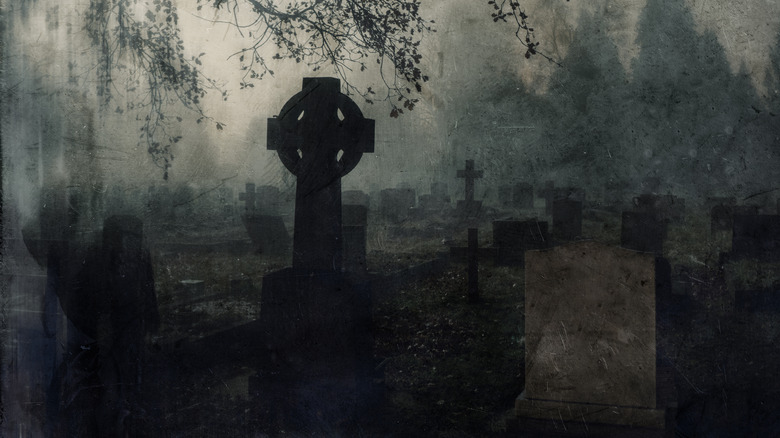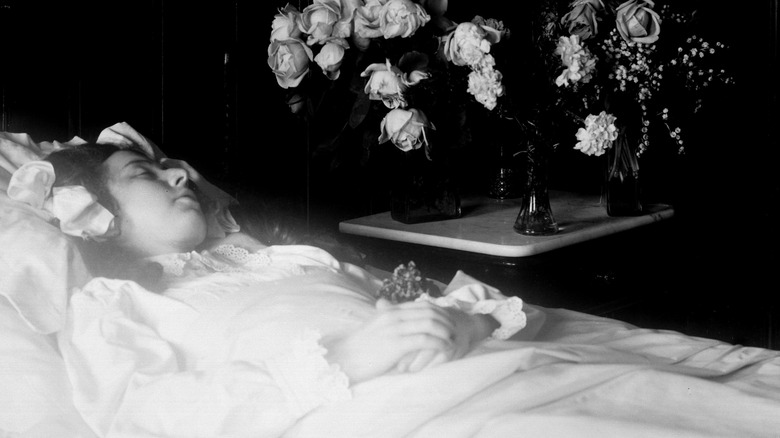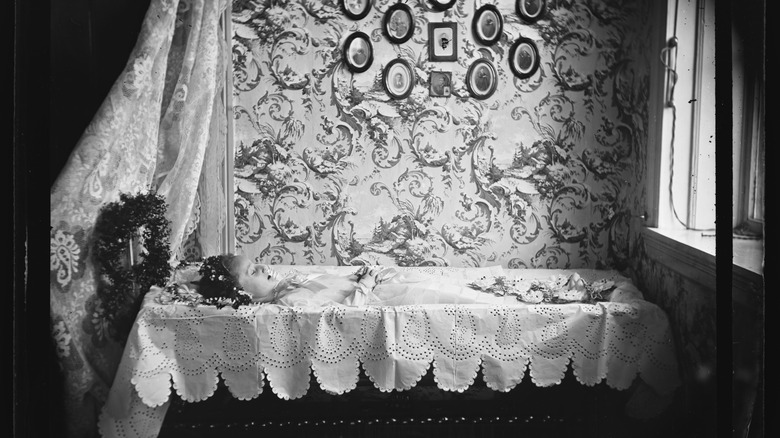How People Handled The Deaths Of Loved Ones In The Victorian Era
Grieving the death of loved ones are done in various ways in different cultures throughout history. For instance, in some cultures, families hold celebratory rituals to celebrate the life of their dead through games and feasts as a way to cope with loss (via The Conversation). In the Victorian era, death photography was a common practice in order for loved ones to have a remembrance of their dead relatives.
In the early 19th century when photography wasn't popular yet, those who lost their loved ones would cut locks of the dead's hair and place them in jewelry to be worn. In some cases, a death mask — a wax or plaster impression of the dead person's face — was created as a memento. By the mid-19th century, however, photography was becoming more popular and death photography became one of the ways families can immortalize their loved ones, as reported by BBC. Today, Victorian death photos make rounds online and although they may seem morbid and disturbing, they once provided loved ones consolation in their times of grief.
When did it start?
The Victorian era saw high mortality rates and short life spans due to diseases such as cholera, scarlet fever, typhoid, and smallpox. In 1850, per English Heritage, the average lifespan for women was 42 and for men, it was 40. Infant deaths were also common, with some babies not even reaching their first birthday. Before the age of photography, wealthy families would hire artists to create illustrations and paintings of their dead loved ones. When photography became popular, those who couldn't afford to hire artists found a way to honor their loved ones with a death photo. In some cases, the only family portrait someone would have is a photograph of the family together with a dead relative.
Death photos were easy to take for the photographer, per ATI, as they remained still — an important factor in taking a good photo back then as subjects needed to stay still for minutes to take a clear photo. In a death photo, the subject is typically positioned in such a way that the person looks asleep. There are other photos, however, that show a dead person propped up with stands and eyes painted on their closed eyelids to appear lifelike. Families took special care in preparing for the photograph, often surrounding the dead with flowers or a toy in the case of children.
Why photograph the dead?
Aside from having a remembrance of their dead loved ones with a photograph, death photography is also a form of grieving process for the ones left behind. In cases where the death was horrific or abrupt, family members get the chance to view their loved ones a final time in a beautiful way that they can control, per The Collector. According to Elizabeth Burns, the creative and operations director at the Burns Archive, each death photograph was taken out of love for the deceased. "We look at them today sort of with shock and awe, but... these photographs were taken in love," she said.
In the 20th century, the practice of photographing the dead dwindled as photography sessions became cheaper and cameras were made readily available for consumers. By that time, it was more affordable for individuals and families to have their portraits taken during their lifetime, lessening the need for a death photo to have as a remembrance.


